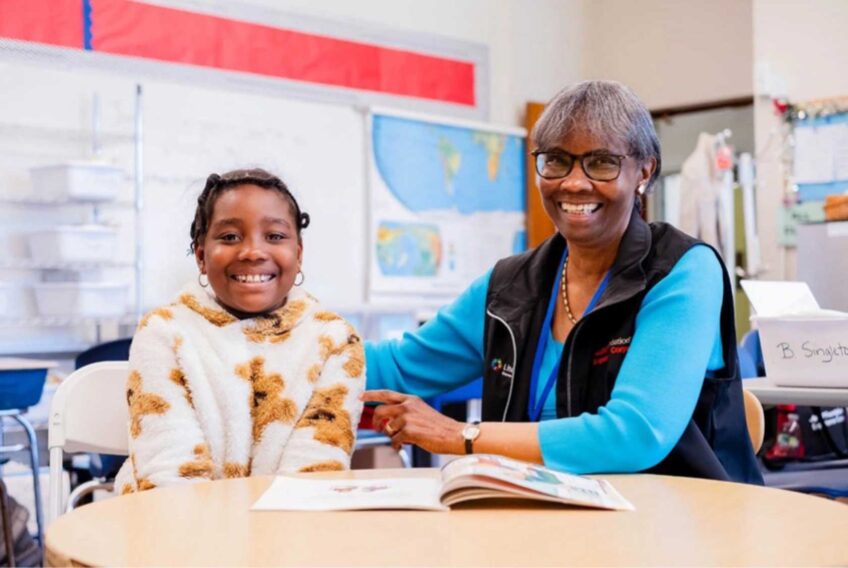Meet Letise LaFeir, New England Aquarium’s first conservation chief
She brings a love of science, people to her role

As a young Black girl in Chicago, Letise LaFeir was fascinated with marine life.
She would ask her mother to go to Shedd Aquarium, where she would gaze into the giant tank full of sharks, stingrays and saltwater fishes.
She developed a deep interest in the ocean by the seventh grade, joined teen programs at the aquarium and got her scuba diving license in high school. She knew she wanted to pursue a career in ocean science by the time she applied to college.
She would later become an expert conveying her love for science to policymakers and anyone else who would listen.
Now, almost 1,000 miles away from her hometown, LaFeir is bringing her love of the ocean — and drive to better connect conversations and policies around conservation — to her role as the New England Aquarium’s first chief of conservation and stewardship, a role she stepped into last March.
“The pieces can come together in a way — intentionally, where it’s truly integrated,” LaFeir said. “My duty is to make sure we’re connecting the dots across our own levers to start to make more of a difference [and] more of a positive impact on conservation.”
LaFeir’s ability to bridge science and policy sets her apart, her colleagues say.
LaFeir can “translate” the research and legislation with “grace and ease,” said Karen Hyun, chief of staff at the National Oceanic and Atmospheric Administration.
“These things take a lot of nuance and ability to translate and there’s a lot of gray [in the policy] where the science is a little bit less gray or the uncertainty is very explicit,” Hyun said. “Letise has really been remarkable in being able to do that and also speak to decision makers … who may not be scientists in a way that they can understand.”
Those skills are critical to conveying the urgency of the climate, biodiversity and other crises. They also are essential in venues like an aquarium, where the job is not only to inform, but to inspire the next generation, said Sarah Reiter, the aquarium’s associate vice president of ocean conservation. Reiter said she first met LaFeir while doing her postdoc at Stanford’s Center for Ocean Solutions Center while the latter worked at the Monterey Bay Aquarium.
“The challenges we face and the work … [we do are] existential in nature,” said Reiter, who also runs Upwelling, a conservation consulting firm, with LaFeir. “The climate crisis, the biodiversity crisis — it can be bleak and what we need to be able to do is break through that to help people see themselves and other beings on our planet.”
LaFeir, who is responsible for overseeing the exhibit plans, is settling into her role at the aquarium after 10 months on the job. She has been learning the names of the people and animals and integrating conservation programming throughout the aquarium.
She has been developing the aquarium’s sustainability plan. Despite the aquarium’s extensive conservation work, LaFeir said it did not have specific targets around things like water usage and waste management. She is now pulling together smaller initiatives that were already happening.
“We were already starting to reduce plastics in our gift shop. Well, what’s our plastic footprint across the organization?” she said. “We do some composting in our café; what about behind the scenes when we’re getting deliveries or collecting for animal feed?”
She is using her background to help with that work.
LaFeir developed her drive to help science find a broader audience among policymakers when she was a legislative fellow on Capitol Hill. She sharpened that ability as an ocean policy manager at the Monterey Bay Aquarium and a day-one appointee in the NOAA at the start of the Biden Administration.
In 2021, she helped to organize a NOAA roundtable series to better understand various communities’ needs around resilience, Hyun said. Those talks included conversations with emergency managers and faith-based communities in the southwest dealing with homeless populations and extreme heat; residents in flooded communities in Detroit; and a consortium on Native American tribal health in Alaska.
“Not only is it really meaningful because we understand what those communities need and are beginning to scale that work across other communities facing those kinds of threats … [but it is also] meaningful for us as people who work in a science agency,” Hyun said. “It really grounds the work we do in communities, which has been pretty revolutionary for the way we do business here.”
Reiter said LaFeir is skilled at meeting residents where they are. “Whether it’s a coastal community in Massachusetts or …a tribe in Alaska, she has an ability to communicate these complicated concepts in a way that people can relate to,” Reiter said. “That’s what’s really… important with our line of work.”
She never turns down a request to talk with someone who is interested in learning more about her career, Reiter added.
LaFeir said her willingness to talk with the next generation of scientists stems, in part, from being a Black woman in a field that has a vanishingly low proportion of people of color. According to 2021 data from the National Science Foundation, about 2.5% of the graduate students in marine and ocean sciences who were surveyed were Black.
She said the landscape of people of color in the field has grown, but there’s still work to do. LaFeir said when she started, she was often the only Black person in the room. Over time, she started identifying a cohort of the same scientists of color, crossing paths again and again.
Now she is meeting more people who she’s never met before. As she talks to young people, she said she often tells them to network early, point out their interests, and be willing to call up someone and ask for advice.
She hopes that the next generation will be able to bring more diversity and new solutions to the world of climate and conservation.
“If you’re genuine about it, having diversity around the table not just changes the table, it changes the outcomes because we’re asking questions you wouldn’t have even considered if you didn’t know to ask,” LaFeir said.






